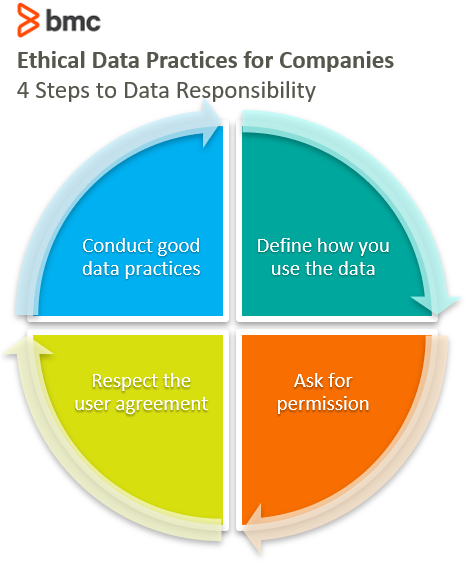Table of Contents
In today’s digital age, businesses have access to a wealth of data that can help them understand their audience better and make informed decisions. However, it is crucial to handle this data responsibly and ethically. This blog will act as a social media data collection guide, diving into the types of data businesses collect from their audience, such as first, second, and third-party data. In addition, it will also expand on how brands can leverage each type of data and the importance of ethical data usage.
First-Party Data
First-party data is information collected directly from customers or users who interact with a business. This data is typically obtained through various touch points such as website interactions, email subscriptions, customer surveys, or loyalty programs. It includes demographic details, purchase history, browsing behavior, and preferences.

First-party data is valuable because it offers businesses insights into their existing customer base, allowing them to personalize experiences, improve customer satisfaction, and drive targeted marketing campaigns. Social media collection with first-party data helps businesses can identify patterns and trends within their customer base.
For example, an e-commerce company may discover that a particular age group prefers a specific category of products or that customers from certain regions tend to purchase during specific seasons. With this knowledge, businesses can tailor their marketing messages, promotions, and product offerings to suit their customers’ preferences, resulting in higher engagement and conversion rates.
Second-Party Data
Second-party data refers to data obtained from a trusted partner or source. It involves a mutual agreement between two organizations to share their first-party data. For example, an online retailer might collaborate with a complementary brand to exchange customer data, enhancing their understanding of their shared target audience.
By leveraging second-party data, businesses can expand their customer insights and reach, targeting new segments more effectively and forging strategic partnerships.
Collaborating with trusted partners allows businesses to tap into new data sources that align with their target market. This can be particularly beneficial for businesses looking to enter new markets or expand their customer base. Companies can better understand their audience’s preferences, behaviors, and interests by combining their first-party and second-party data.
Overall, this enhanced understanding enables businesses to refine their marketing strategies, personalize their offerings, and reach new customers more efficiently.
Third-Party Data
External sources collect third-party data typically purchased from data aggregators, analytics platforms, or providers. This data is from various online and offline sources and offers a broader consumer behavior and preferences perspective. Third-party data can include information about interests, browsing habits, demographics, and more. Businesses often use third-party data to gain insights into new markets, identify trends, refine audience targeting, and optimize advertising campaigns.
Leveraging third-party data allows businesses to obtain a wealth of information beyond their customer base. For instance, a clothing company that is planning a campaign for a new line of clothing could utilize third-party data to figure out the target audience’s media consumption habits, interests, and online behavior. By analyzing third-party data, businesses can establish their target audience and create more effective campaigns to boost their sales and resonate.
Ethical Data Usage and Regulations
When understanding social media data collection, businesses must prioritize ethical practices and comply with relevant regulations, such as the General Data Protection Regulation (GDPR) and the California Consumer Privacy Act (CCPA).

Here are a few key considerations:
Transparency and Consent
Obtain informed consent from individuals before collecting their data. Clearly communicate how their data will be used and provide options for control and privacy settings. Businesses must ensure their customers can opt-out or modify their data preferences easily. People should always have the option to understand where their data is going and what it is being used for.
Data Security
Understanding social media data collection is important, but security is even more important! Keep data safe with appropriate security measures to protect it from unauthorized access, breaches, or misuse. Consider utilizing a proxy service to add an extra layer of security and anonymity when collecting social media data. Regularly review and update security protocols to stay ahead of emerging threats. Some best practices include encrypting sensitive data, implementing firewalls, and conducting regular security audits.
Anonymization and Aggregation
Anonymize personal data whenever possible and aggregate data to minimize the risk of identification. Removing personally identifiable information (PII) from datasets helps protect individuals’ privacy while allowing businesses to derive valuable insights.
Personal identifiable information is any data that can be used to identify an individual. Examples of PII include but are not limited to full name, date of birth, Social Security number, passport number, driver’s license number, or any other government-issued identification number.
It can also encompass information like home address, race, marital status, etc. This can be scary when abused, so protecting this information at all costs is important. Many companies must handle this information under certain regulations and risk serious repercussions if an unauthorized disclosure or breach occurs.
Data Governance
When understanding social media data collection, you must implement strong data governance practices, including data retention policies, access controls, and protocols for data sharing with partners. Establish clear guidelines and procedures for data handling within the organization and regularly train employees on data privacy and security. Consider using mentoring software to enhance the training process, providing expert guidance and ensuring employees are well-equipped to follow data privacy protocols effectively.
Compliance with Regulations
Stay updated with relevant data protection regulations and ensure compliance. Familiarize yourself with the specific requirements of the jurisdictions where your business operates and take the necessary steps to meet those obligations.
Social media data collection is crucial in modern business operations, enabling organizations to better understand their audience and deliver more personalized experiences. By leveraging first-party, second-party, and third-party data, brands can gain valuable insights into consumer behavior, improve targeting, and drive effective marketing strategies. However, handling data ethically and complying with relevant regulations is equally important.
Conclusion
Understanding social media data collection is crucial for businesses. By prioritizing data privacy, security, and transparency, businesses can build trust with their audience while harnessing the power of data to drive growth and success. It’s essential to obtain proper consent, implement strong security measures, anonymize data where possible, and establish clear data governance practices. By doing so, businesses can navigate the data landscape responsibly, respect individual privacy rights, and leverage data.























